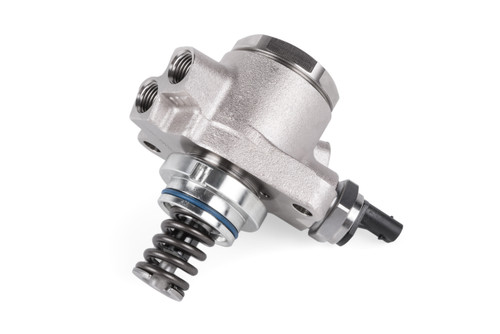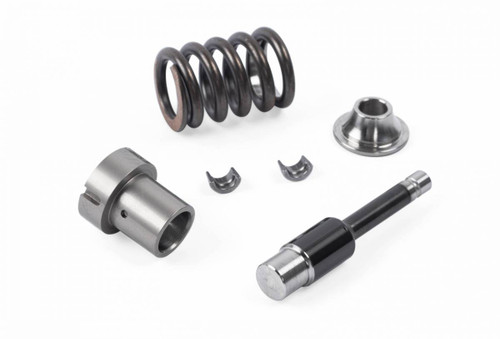 WARNING: This product can expose you to chemicals that are known to the State of California to cause cancer, birth defects or other reproductive harm. For more information, visit www.P65warnings.ca.gov.
WARNING: This product can expose you to chemicals that are known to the State of California to cause cancer, birth defects or other reproductive harm. For more information, visit www.P65warnings.ca.gov.The APR High Pressure Fuel Pump (HPFP) (MS100061) is the essential fueling upgrade for the Audi TT RS (8S) 2.5TFSI engine, designed to eliminate the common bottleneck in the direct injection system under high-demand scenarios. By increasing the internal displacement, the APR HPFP dramatically increases the maximum volume of fuel delivered by 30% over stock.
This increased fuel volume is crucial for satisfying the stringent fueling requirements of high-horsepower setups and maintaining steady fuel pressure, even when the factory turbocharger or larger turbo systems begin to tax the fuel system at lower RPMs. The pump uses high-quality, extreme-tolerance components, continuing APR's proven track record as a pioneer and OEM supplier of GDI components for VAG vehicles since 2006.
Features:
-
Increased Fuel Volume: Dramatically increases the volume of fuel displaced by the HPFP by 30%.
-
Supports Big Power: Maintains higher fuel pressures under demanding situations, ideal for high-output vehicles.
-
Extreme Tolerances: Manufactured with ultra-high precision, featuring dimensional tolerances as tight as 0.00004" and geometrical tolerances as tight as 0.00005".
-
Superior Construction: Features a DLC (Diamond-Like Carbon) coated piston and a plunger/barrel created from certified, heat-treated bearing-grade stainless steel for exceptional hardness and reliability.
-
Optimized Internals: Includes an upgraded and weight-matched spring and all necessary internal seals are replaced.
-
Quality Assurance: Fully rebuilt in-house, includes a new factory pump body (genuine Hitachi components) and is fully machine tested and broken in before shipping.
Product Contains:
-
(1) APR High Pressure Fuel Pump (HPFP) Assembly
-
(1) New OEM Factory Pump (Housing/Sensors)
-
(1) Upgraded and Weight Matched Spring
-
(1) DLC Coated Piston and Barrel Assembly
-
(1) Set of All Necessary Internal Seals
Important Note: To maximize performance and ensure proper operation, specific APR software is available and recommended for various vehicles. Due to its high precision, installation should be performed in a clean environment.
Warranty This product is supported by a Manufacturer's Warranty. Note: Manufacturer warranty terms are subject to change.
- PDP tag:
- Free Shipping*
- Sale:
- On Sale
- pdp tag:
- On Sale











